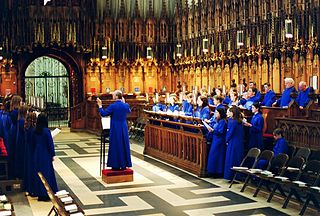
A choir, also known as a chorale or chorus is a musical ensemble of singers. Choral music, in turn, is the music written specifically for such an ensemble to perform or in other words is the music performed by the ensemble. Choirs may perform music from the classical music repertoire, which spans from the medieval era to the present, or popular music repertoire. Most choirs are led by a conductor, who leads the performances with arm, hand, and facial gestures.
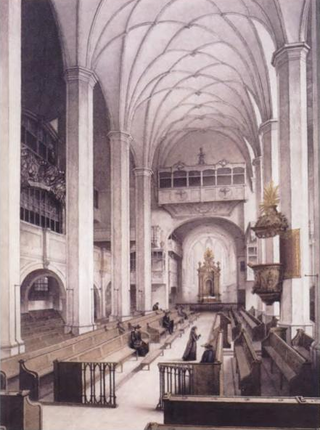
Halt im Gedächtnis Jesum Christ, BWV 67, is a church cantata by Johann Sebastian Bach. He composed it in Leipzig for Quasimodogeniti, the first Sunday after Easter, and first performed it on 16 April 1724.

Ach Gott, wie manches Herzeleid, BWV 3, is a church cantata by Johann Sebastian Bach. He composed the chorale cantata in Leipzig for the Second Sunday after Epiphany and first performed it on 14 January 1725. It is based on the hymn published by Martin Moller in 1587.

Christ unser Herr zum Jordan kam, BWV 7, is one of several church cantatas which Johann Sebastian Bach composed for the Feast of St. John the Baptist. He wrote it in Leipzig and led its first performance on 24 June 1724.

Jesu, der du meine Seele, BWV 78, is a church cantata by Johann Sebastian Bach. He composed it in Leipzig for the 14th Sunday after Trinity and first performed it on 10 September 1724. It is based on the 1641 hymn by Johann Rist, "Jesu, der du meine Seele", for which it is named. The topic of the chorale, the Passion of Jesus cleansing the believer, is only distantly related to the Sunday's readings.
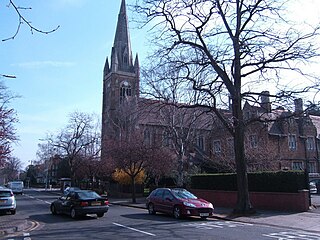
Rejoice in the Lamb is a cantata for four soloists, SATB choir and organ composed by Benjamin Britten in 1943 and uses text from the poem Jubilate Agno by Christopher Smart (1722–1771). The poem, written while Smart was in an asylum, depicts idiosyncratic praise and worship of God by different things including animals, letters of the alphabet and musical instruments. Britten was introduced to the poem by W. H. Auden whilst visiting the United States, selecting 48 lines of the poem to set to music with the assistance of Edward Sackville-West. The cantata was commissioned by the Reverend Walter Hussey for the celebration of the 50th anniversary of the consecration of St Matthew's Church, Northampton. Critics praised the work for its uniqueness and creative handling of the text. Rejoice in the Lamb has been arranged for chorus, solos and orchestral accompaniment, and for SSAA choir and organ.

Wir müssen durch viel Trübsal, BWV 146, is a cantata by Johann Sebastian Bach, a church cantata for the third Sunday after Easter. Bach composed it in Leipzig in 1726 or 1727.

Aus tiefer Not schrei ich zu dir, BWV 38, is a church cantata by Johann Sebastian Bach, composed in Leipzig in 1724 for the 21st Sunday after Trinity and first performed on 29 October 1724. It is based on Martin Luther's penitential hymn "Aus tiefer Not schrei ich zu dir", a paraphrase of Psalm 130.

Johann Sebastian Bach composed the church cantata Herr, deine Augen sehen nach dem Glauben, BWV 102 in Leipzig for the tenth Sunday after Trinity and it was first performed on 25 August 1726.
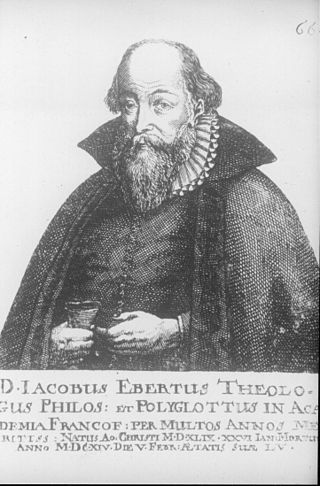
Johann Sebastian Bach composed the church cantata Du Friedefürst, Herr Jesu Christ, BWV 116, in Leipzig for the 25th Sunday after Trinity. He led the first performance on 26 November 1724, concluding the liturgical year of 1724.
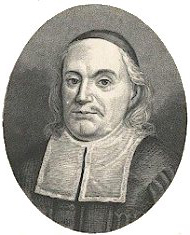
Ich hab in Gottes Herz und Sinn, BWV 92, is a cantata by Johann Sebastian Bach for use in the Lutheran service. He composed the chorale cantata in Leipzig for Septuagesimae and first performed it on 28 January 1725. It is based on the hymn "Ich hab in Gottes Herz und Sinn" by Paul Gerhardt (1647), and is the only chorale cantata Bach based on a hymn by Gerhardt.

Johann Sebastian Bach composed the church cantata Herr Jesu Christ, du höchstes Gut, BWV 113, in Leipzig for the eleventh Sunday after Trinity and first performed it on 20 August 1724. It is based on the eight stanzas of the 1588 hymn "Herr Jesu Christ, du höchstes Gut" by Bartholomäus Ringwaldt, a penitential song.

Johann Sebastian Bach composed the church cantata Schmücke dich, o liebe Seele, BWV 180, in Leipzig for the 20th Sunday after Trinity and first performed it on 22 October 1724.
In allen meinen Taten, BWV 97, is a church cantata by Johann Sebastian Bach. He composed the chorale cantata in Leipzig in 1734 for an unspecified occasion. The text consists of the unchanged words of the hymn by Paul Fleming (1642).
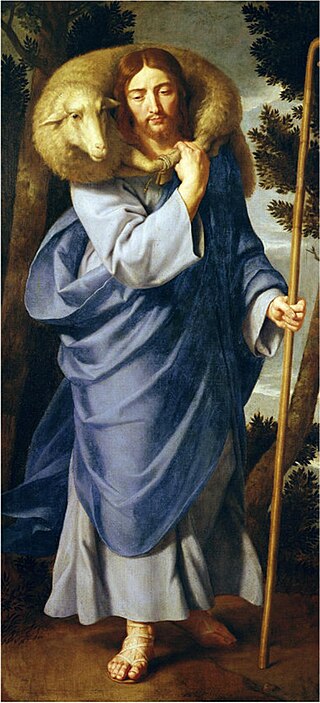
Der Herr ist mein getreuer Hirt, BWV 112, is a cantata by Johann Sebastian Bach, a church cantata for the second Sunday after Easter. Bach composed the chorale cantata in Leipzig and first performed it on 8 April 1731. It is based on the hymn by Wolfgang Meuslin, a paraphrase of Psalm 23 written in 1530, sung to a melody by Nikolaus Decius.
Lobe den Herrn, meine Seele, BWV 143, is an early cantata by Johann Sebastian Bach. He appears to have composed the cantata for New Year's Day, probably when he was in his 20s, but whether it was first performed in Mühlhausen or Weimar is not known: the date of composition is unclear. Bach's authorship has been doubted because the cantata has several unusual features; one of these is the scoring, it is the only Bach cantata to combine three corni da caccia with timpani.

Süßer Trost, mein Jesus kömmt, BWV 151, is a church cantata by Johann Sebastian Bach. He composed it in Leipzig for the third day of Christmas and first performed it on 27 December 1725.
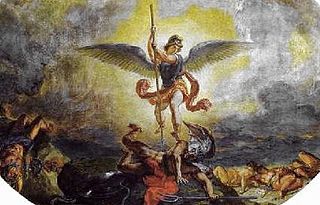
The Company of Heaven is a composition for soloists, speakers, choir, timpani, organ, and string orchestra by Benjamin Britten. The title refers to angels, the topic of the work, reflected in texts from the Bible and by poets. The music serves as incidental music for a mostly spoken radio feature which was first heard as a broadcast of the BBC in 1937.

Hymn to St Peter is a cantata for treble soloist, SATB choir and organ composed by Benjamin Britten in 1955. The piece was the last Britten composed before he first travelled to Asia. He set the text from the gradual of the Feast of Saints Peter and Paul to music which was based on the plainsong of the Alleluia from the hymn. The piece starts with a sombre organ theme in B Flat and when the choir joins in it is initially in unison before breaking into harmonies. After a nimble interlude that recalls children's play, the piece returns to the original theme, ending with a coda played by the organ alone. The piece was first performed at the quincentenary celebrations of St Peter Mancroft, Norwich on 20 November 1955. It was subsequently performed by The Sixteen under Harry Christophers and has frequently been sung with children's voices.













